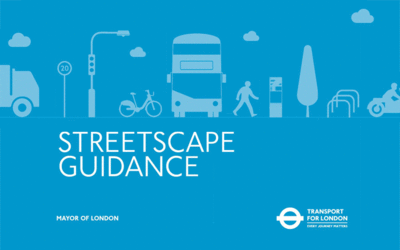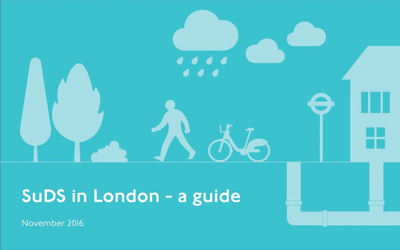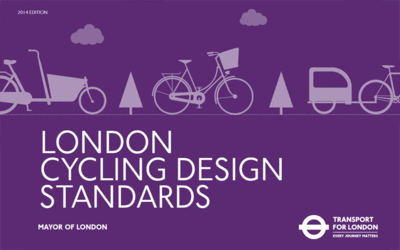Streets toolkit
Streets account for 80% of London's public spaces. They play a fundamental role in moving people around safely, and well designed streets can help enhance quality of life.
We are committed to being more ambitious for streets with a collaborative, design-led approach. The design guidance documents in our toolkit will help planners, designers, highway engineers, contractors and others to meet the standards we've set and to design high quality streets and public spaces.
The toolkit contains:
- Streetscape Guidance
- Sustainable Drainage Systems (SuDS)
- London Cycling Design Standards
- Station Public Realm Design Guidance
- Urban motorcycle design handbook
- Accessible Bus Stop Design Guidance
- Kerbside Loading Guidance

Streetscape Guidance
Streetscape Guidance provides a standard for London's streets and spaces for those who will be working on or affecting London's streets. Whether a one-off major project or a smaller local adjustment, it defines our aspirations and outlines the criteria for good design, material selection, installation and maintenance.
Please note that this is a large PDF file and may take a short while to load.

Sustainable Drainage Systems (SuDS)
This guidance shows how Sustainable Drainage Systems (SuDS) can be incorporated into London's streets and wider public areas to help manage surface water run off, reduce flood risk and provide other environmental benefits. Revised and updated in November 2016, the guidance highlights potential opportunities and constraints, aimed at encouraging the relevant authorities across London, including the boroughs, to consider their streetscape and the possibilities of successfully integrating SuDS.

London Cycling Design Standards (LCDS)
Comprehensively revised and updated in 2014, LCDS sets out requirements and advice for cycle network planning and for the design of dedicated cycle infrastructure, cycle-friendly streets and cycle parking. This guidance applies to all streets in London and must be adhered to for relevant funding programmes. In October 2016, minor updates were made to the document, for consistency with the revised Traffic Signs Regulations and General Directions (2016).
The New Cycle Route Quality Criteria published in May 2019 describes the quality we expect for proposed cycle routes in London, based on London Cycling Design Standards best practice guidance. A spreadsheet tool and technical note are on the Cycling page in Publications and documents.
Guidance on design of temporary traffic management to support cycling may be found in the TfL temporary traffic management handbook (2018).
Guidance on signing cycle routes as part of the Cycleways network, including design standards for vertical signs and surface markings, can be found in the Cycleways Signing Guidance (2019).
Contact the Cycling team about LCDS
For comments and further information on LCDS contact lcds@tfl.gov.uk.
Access Control Guidance Note
This guidance note outlines a process for considering the suitability of access controls or barriers. The aim of this guidance is to ensure that all legitimate users can access paths and public spaces.
Station Public Realm Design Guidance
This guidance, prepared by TfL Urban Design Team, Grimshaw Architects and BDP in 2015, covers the planning, design and upgrade of station public realm, station forecourts or station approaches. It deals with the relationship between the station and the wider urban fabric and is for everyone involved in the process, including designers, developers, local authorities and communities.
Urban Motorcycle Design Handbook
This Urban Motorcycle Design Handbook explains how road and traffic conditions affect motorcyclists. It also details how how risks can be reduced and hazards can be minimised for this vulnerable group of road users.
Accessible Bus Stop Design Guidance
This guidance describes the importance of both roads and street design so that bus services are accessible for all bus users. This updated guidance also reflects the importance of Healthy Streets and considerations of the needs of cyclists. Updated in March 2017.
Contact the Public Transport team about Accessible Bus Stop design guidance
For comments and further information on accessible bus stop design guidance contact absdg@tfl.gov.uk.